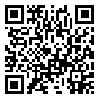Volume 8, Issue 1 (9-2008)
Iranian Journal of Medical Education 2008, 8(1): 121-131 |
Back to browse issues page
Download citation:
BibTeX | RIS | EndNote | Medlars | ProCite | Reference Manager | RefWorks
Send citation to:



BibTeX | RIS | EndNote | Medlars | ProCite | Reference Manager | RefWorks
Send citation to:
Hazavehei S M M, Asadi Z, Hassanzadeh A, Shekarchizadeh P. Comparing The Effect Of Two Methods Of Presenting Physical Education 2 Course On The Attitudes And Practices Of Female Students Towards Regular Physical Activity In Isfahan University Of Medical Sciences. Iranian Journal of Medical Education 2008; 8 (1) :121-131
URL: http://ijme.mui.ac.ir/article-1-783-en.html
URL: http://ijme.mui.ac.ir/article-1-783-en.html
, hazavehei@hlth.mui.ac.ir
Abstract: (19131 Views)
Introduction: Regular physical activity has a positive effect on physical, mental, and social health aspects of students and society and presenting physical education course in universities plays an important role in achieving this goal. This study was performed with the aim to compare the effectiveness of two methods (Basnef and routine) of presenting physical education course on the attitude and practice of female students towards regular physical activity. Methods: In this quasi-experimental prospective study, all female students of Isfahan University of Medical Sciences (n=113) who had taken physical education (II) course in the first academic semester of 2006-2007 participated. Physical education classes were divided randomly into two experiment and control groups. The data gathering tools included two questionnaires, one for measuring attitude towards doing physical activity and also towards physical education course and one International Physical Activity Questionnaire (IPAQ). Students in the experiment group passed physical education course during two months based on BASNEF model and the control group passed the routine course during two months. All the participants were followed up 2 and 4 months after the end of the educational program. Collected data was analyzed by SPSS software. Results: After the intervention, the experiment group achieved a significantly higher mean score in two areas of attitude toward physical education and physical activity compared to the control group. The total physical activities performed in the experiment group had a better distribution and was significantly better than the control group. Conclusion: Employing behavioral models such as BASNEF model may prove helpful in developing the curriculum of physical education (II) course.
Type of Study: Original research article |
Received: 2008/12/2 | Accepted: 2011/08/7 | Published: 2008/09/15 | ePublished: 2008/09/15
Received: 2008/12/2 | Accepted: 2011/08/7 | Published: 2008/09/15 | ePublished: 2008/09/15
Send email to the article author
| Rights and permissions | |
 |
This work is licensed under a Creative Commons Attribution-NonCommercial 4.0 International License. |




